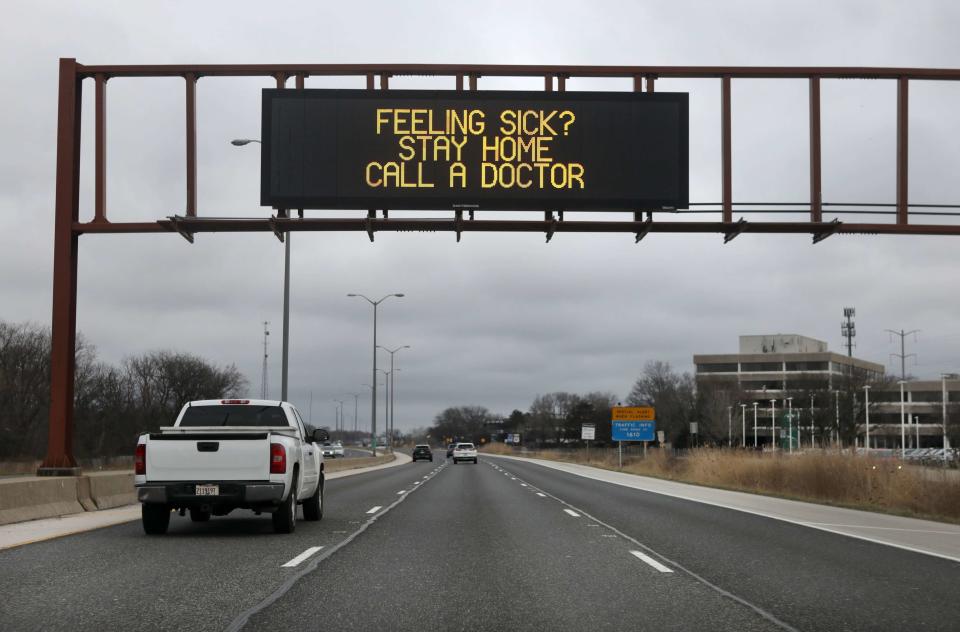Editorial: Funny interstate road signs do no harm, Secretary Buttigieg.

You’ve likely seen the funny electronic signs on highways around the country: “Drive Hammered, Get Nailed,” “Don’t Drive Intexticated,” or, for Chicago hot dog fans, “No Texting, No Speeding, No Ketchup.”
Did you also hear the one about the federal bureaucrats trying to ban humor in those messages flashed to drivers? That one is no joke.
The U.S. Federal Highway Administration is pushing to end any funny business on roadway signs.
In an 1,113-page rule book published last month, the Feds claimed those messages might be “misunderstood or understood only by a limited segment of road users and require greater time to process and understand.” And while the agency isn’t outright banning humorous text, it is strongly recommending against it.
You’d think a bunch of government employees who commute on the treacherous Washington Beltway would want any laughs they could get. Instead, they’ve decreed that signs should be “simple, direct, brief, legible and clear.” The rule book even gives a couple of examples, including, “Impaired Drivers Lose License + Jail.”
We understand that America is a melting pot and plenty of motorists unfamiliar with American slang and local culture might not get the jokes in signs such as Boston’s famous, “Use Ya Blinkah.” But the government’s preferred phrase using the word “impaired” is surely no simpler or easy to understand.
The same goes for the bureaucrats’ mandate to convey legal requirements and not just slogans. So instead of the straightforward, “Don’t Text, Just Drive,” the hardworking lawyers at the Transportation Department strongly recommend, “No Hand-Held Phone by Driver.”
Obviously, so much better.
This spoilsport effort has become fodder for late-night comedy routines and gripes about liberal overlords such as Transportation Secretary Pete Buttigieg banishing all fun. But there’s a serious side.
Roadway deaths have been trending in the wrong direction, after many decades of progress. While the latest figures show a slight improvement, the high death rates — especially pedestrian fatalities — should give everyone pause.
The reasons are not exactly known, but anyone who drives can name a few likely suspects. Smartphones, for starters, divert attention from the road, and traffic cops are hard-pressed to enforce the weak laws against texting while driving.
The growth in the Sun Belt’s population is also a factor. The Southern U.S. is awash in multilane roads with fast speed limits, dim lighting and no sidewalks, bike lanes or crosswalks — a recipe for fatal accidents. The poor and homeless who tend to congregate on foot along those roads are especially vulnerable.
Some attribute highway fatalities to the legalization of cannabis, others to the blinding LED headlights and distracting touch screens on today’s cars. Everyone who gets behind the wheel has a favorite pet peeve.
The results are grim. The U.S. vehicle death rate is much higher than in most European countries, for instance. The New York Times recently reported that the death rate on the roads of crowded Britain is five times lower.
The U.S. can do better. Building safer crosswalks is relatively cheap. So is upgrading the lighting and reducing speed limits. And while it requires more investment, there clearly is a need to reduce the number of U.S. grade crossings between road and rail: the fatalities in Florida involving the new Brightline train and road vehicles are unsettling, as was the news last week of a young woman in Barrington being killed by a Metra train.
Taking humor out of electronic road signs? A waste of time.
Many states, Illinois included, have used the popularity of humorous signs to promote highway safety. This is a tried-and-true tactic: Illinois highway officials recognized the opportunity years ago by launching contests and otherwise taking advantage of interest in its funny signs to get the message out that people should not drive while drunk, texting or enraged.
A spokeswoman for the Illinois Department of Transportation explained to the Chicago Tribune during a 2018 safe-driving campaign that, without humor, the electronic signs get stale: “If we can catch someone’s attention for just a second and let them know there are life-and-death consequences when they’re on the road, that’s what we want to do.”
Her observation is supported by a surprisingly robust body of research showing that humor helps to get messages across: This is why airlines create those humorous safety videos, each specifically designed to get you to actually look at the screen and not your phone. There’s an academic journal and international research conference devoted to how humor can make everything from management to journalism more effective.
Ever notice how many TV spots use humor to build brand awareness and sell products? That’s no accident. And while marketing gurus still debate how well humor sells, there’s no debate about the billions that savvy companies devote to funny ads. Just wait for this year’s Super Bowl.
So thanks for your agency’s strong recommendation against funny signs, Secretary Buttigieg, which we strongly recommend that everyone ignore.
Now let’s get to work on actually making our roads safer.
Join the discussion on Twitter @chitribopinions and on Facebook .
Submit a letter, of no more than 400 words, to the editor here or email letters@chicagotribune.com .

 Yahoo Finance
Yahoo Finance 